Assignment:
1. Five resistors are connected in series along with a voltage source of 100V. The resistance attributed to each component is shown below.
R1 = 250Ω
R2 = 150Ω
R3 = 350Ω
R4 = 50Ω
R5 = 500Ω
a) How much voltage would be measured across each resistor?
b) How much current flows in the circuit?
c) How much power is dissipated in each resistor?
2. Find the voltage across each resistor.
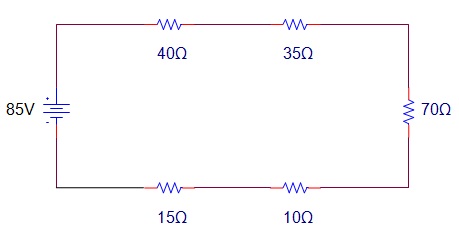
3. Five resistors are connected in a series circuit. Their values are:
R1 = 250Ω
R2 = 150Ω
R3 = 2000Ω
R4 = 450Ω
R5 = 900Ω
a) Which resistor would have the most voltage across it?
b) Which resistor would have the least voltage across it?
c) If the current that flows through each resistor is 10A, find the value of the voltage source that supplies this current.
4. A total of 10 resistors are connected in series with a voltage source of 50V. Each resistor has a resistance of 500Ω.
a) Draw a schematic (circuit diagram) of this circuit.
b) Draw an equivalent circuit to that in part a consisting of one voltage source and one resistor.
c) Calculate the total power delivered to the circuit by the voltage source.
5. Three resistors are connected in parallel in a certain circuit. Their values are:
R1= 1500Ω
R2 = 2800Ω
R3 = 500Ω
a. Which resistor would have the most current flowing through it?
b. Which resistor would have the least current flowing through it?
c. If the voltage across each resistor was 2000V, find the current that flows through each resistor.
6. The voltage across the following parallel resistors was measured to be 45V.
R1 = 40Ω
R2 = 50Ω
R3 = 200Ω
a) How much current flows in each resistor?
b) How much power would be dissipated in each resistor?
7. Find the current and voltage associated with each resistor in the circuit shown below.
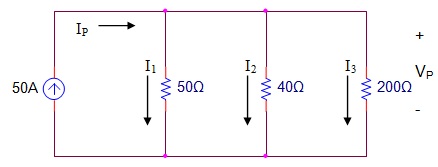
8. The total positive and negative charges in a copper penny are moved apart such that the force of attraction is equal to 9 newtons. Use the following information to determine how far apart these charges are.
q1 = 1.3*10-15 coulombs
q2 = 1.3*10-15 coulombs
K = 9*109 newtons . meters2/coulombs2
9. Use the following information to determine the electric repulsive force between two protons within the nucleus of the iron atom.
q1 = 1.6*10-19 coulombs →
q2 = 1.6*10-19 coulombs
K = 9*109 newtons . meters2/coulombs2
r = 4*10-15 meter
10. A neighbor of yours uses 150 watts of power while watching television one night. If the voltage from their electric socket provides an average of 10V, how much current did the television use?
11. All the computers in the engineering college at CSUN used 2,000 watts of power on a particular day. If the total current measured that day was 750 amperes, how much voltage was required to operate the computers?
12. For each of the conductors shown below, either draw the direction of electric current or the magnetic field lines.
a. 
b. 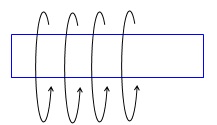
c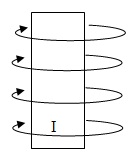
d. 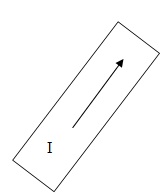
13. Using the color code, calculate the resistance for each of the following resistors:
a) R1 - red, yellow, green
b) R2 - blue, blue, red
c) R3 - brown, black, brown
14. Using the information below, determine the color orientation for each resistor:
a) 56 * 103Ω
b) 47 * 106Ω
c) 22 * 102Ω
15. Five resistors have the following values :
R1 = 250
R2 = 150Ω
R3 = 2000Ω
R4 = 450Ω
R5 = 900Ω
Determine the color orientation for each resistor.